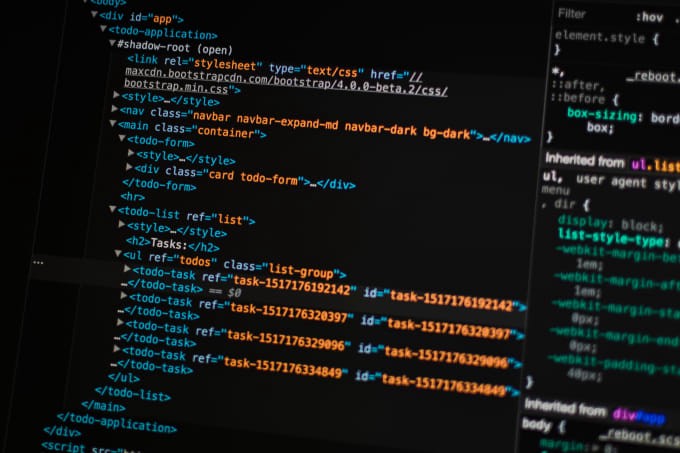
How to Know the Difference between Web Development and Web Design
For most people, even those who are part of the digital marketing industry, understanding the difference between web design and web development isn’t easy. Isn’t a web designer doing the same job as a web developer? Aren’t these titles one and the same thing? Obviously, they are not.
If you’re a web designer, people either assume you are also a web developer or don’t have any idea what exactly your job entails. The same thing goes for a web developer. Explaining the exact difference can be quite tiresome.
However, we all know how massive digital media is now. Businesses in nearly every industry are advertising online and if they aren’t doing so, they are either just about to start or are becoming obsolete, which isn’t surprising as around 4 billion people around the world use the internet primarily to fulfil their needs today.
It is impossible to rely on print media today as one’s only source of advertisement. Earlier, marketers talked about how the younger generation was the main target of digital media marketing. The funny thing is that today, our parents, and sometimes even our grandparents, are ordering online or checking reviews of restaurants before giving them a visit.

Because of this, it comes as no surprise that every business absolutely needs, and this can’t be stressed enough, but every business NEEDS a website. And not only do they need a website, they need one which incorporates all the latest trends, is user-friendly, and can ensure high conversion rates.
Owing to this, web designers and developers are both in high demand since recent years. Companies are always looking to hire both and this industry is a flourishing one. What you need is expertise in your particular area so that you can become irreplaceable.
Before you jump into the field though, be sure of what exactly your job description will be as a web developer or a web designer. You don’t want to show up at your new place of work having only a vague idea of what your boss wants you to do. It’s an unfortunate reality, but you aren’t irreplaceable. If you are not on the same page as the employer, they will likely kick you out before you have even had the chance to settle down.
Employers also need to be completely sure of what the differences between web design and web development are. You may want someone to create a layout for your website, but end up hiring a web developer instead of a designer. It sounds funny when you think about it, but when you’re forced to hand out a month’s salary for no reason because of a single mistake, your boss will definitely not share the humour.
So, without further ado, let’s discuss the two in detail and determine what exactly the difference between them is.
Web Design
The name itself can give you a bit of an idea of what web design actually is. It is the part of the process where the designer plans out what the website will look like. This may seem like a fun job, which it can be, but it’s not always easy. Coming up with the web design comprises of deciding what will be included on the website and how to map this out, which ultimately decides how visitors will view it and respond to it.
How Is This Done?
To create a top-notch website, the first thing that needs to be decided on is what exactly the company wants on the site and what they are looking to achieve from setting it up in the first place. The reason why this is so important is that the wrong objectives can result in the website not putting the main focus on the required elements, resulting in bad marketing, a waste of efforts, and inefficiency in future operations.
Moving on, after the exact content of the website, as well as its layout is decided, a web designer normally comes up with a rough version of what it will look like. Again, knowing which elements need to be incorporated, such as the taglines of the company, the colour themes they are currently using, and contact information, among many other things, is important.
However, that is not all. Many other factors must be kept in mind as well. Will the layout be symmetrical or asymmetrical? Will there be animations and illustrations or will it be simple? To turn these rough drafts into reality, Adobe Photoshop and Illustrator are the main software tools which are used. The final layout of the planned-out design will be created incorporating all that’s been decided at this stage. Web designing will also incorporate decisions regarding the colour scheme and how these colours will be used to provide an optimum end result.
Which Elements Need to Be Managed?
The web designer doesn’t have an easy job, despite the common belief. They have to be very skilled in the use of many tools. They must also have enough know-how to ensure that the end product will deliver and also get the necessary attention. There are many things that can go wrong, in the same way, that the designing of a garment or a house can go wrong.
An important aspect of web design consists of making use of all recent trends as it is a field which is continuously evolving. Trends such as the use of dynamic gradients and chatbots, for example, have come to the forefront in this year and the last, making them things that should appear on the website of a successful company.
Staying on top of all of these things isn’t as easy as some people might make it out to be, but it isn’t impossible either. A good web designer can plan everything out meticulously, making sure they leave no stone unturned in designing a site that promises traffic and a massive ROI.

Web Development
Although it may seem like the work is done once the design stage is over, a web developer holds equal importance in creating the perfect website.
Web development basically encompasses how the design is converted into a website which reflects what the designer planned it to look like.
Again, if you’re a potential employer or employee, you need to know that the definition of a web designer doesn’t end here, but can be further classified into two types – a front-end and back-end developer.
Though this entire field can be discussed under one heading, web development is more commonly divided into two types defined according to what they accomplish in creating a functional website.
Front-End Development
Front-end development consists of basically implementing the design and working on how it will be displayed. It involves converting the design into code which will then be translated into what the user sees when they access the site.
This part of development is so important because it controls how exactly a user will see the website, whether or not they will like it, and how they will use it to achieve whatever results they desire.
Front-end development consists of using software tools such as HyperText Markup Languages (HTML), Cascading Style Sheets (CSS), and JavaScript (JS). These three tools are the backbone of web development – without them, your website won’t have any format and will just be text which won’t be very useful to the viewer at all. Having complete command over these three software tools is essential if you’re planning to enter the industry of web development as a front-end developer. Though JavaScript isn’t always given the same level of importance as the other two, it is still quite commonly used.
Libraries and front-end frameworks are also made use of, making writing the code a faster process.
What Else Comes Under Front-End Development?
Another important aspect of front-end development is ensuring the smooth running of the website. This means that certain tests are run, which are used to determine if the website is working the way it should be and if it responds accurately to a user.
In the event of the website developing any errors, which can occur fairly often, the front-end developers will be the ones who are called upon to fix them. They need to do this as soon as possible and so should be skilled in this aspect.
Front-end development also ensures the website has a responsive web design. What does this mean exactly? It basically makes sure that the website is able to adapt according to the device on which it is being accessed.

Visiting a webpage on a laptop is completely different from browsing it from your smartphone. For example, on a laptop, more things on a particular webpage can be displayed at one time. On the other hand, when it comes to mobile devices such as a smartphone, the website needs to adapt accordingly to fit the most important things in a limited amount of space.
Back-End Development
While front-end development controls the things the user of the website will see, back-end development takes care of what will be happening behind the scenes. Let’s say someone clicks on a button on a website. While it is the front-end developer’s job to make sure the user sees the button and knows what it does, making sure that the action is actually carried out is something which will be handled by the back-end developer.

The back-end basically consists of three parts which are the server, database, and application. These things basically have to be used together to pull already stored data from the database and convert it into front-end code which the user of the website will then see.
Why is Back-End Development So Important?
Nothing is possible without back-end development as the user might fill in their details to sign up for something or might make a request, but nothing will actually be achieved as there won’t be a response at the back-end, thus making it useless for the visitor.
To achieve all this, a back-end developer will be well-versed in the use of software tools such as PHP, Ruby, and SQL among others. If you are looking to get a job as a back-end developer, make sure you have exceptional expertise in these tools. Alternatively, if you’re looking to hire someone to do all the things we have discussed, make sure you hire someone who can handle these tools in a competent manner.
Full-Stack Development
We can’t talk about web development and leave out full-stack development. As already mentioned above, there are developers who can manage the front-end and the back-end functions together. Full-stack development encompasses all those things which have already been discussed. That is, not only will a full-stack developer control how the website will be seen by the viewer, but they will also write code for how the website will respond to and carry out user requests.
Though companies often look for full-stack developers, as it’s always easier to employ one person for a job as compared to two, most developers stick to one of the classifications and don’t feel the need to have expertise over both.
It’s a Wrap!
The discussion in this blog post about how exactly web design and web development differ has hopefully made you realize how both of these terms are certainly not interchangeable. Although each needs the other for success, they are still two completely different things and should be recognized as such.





